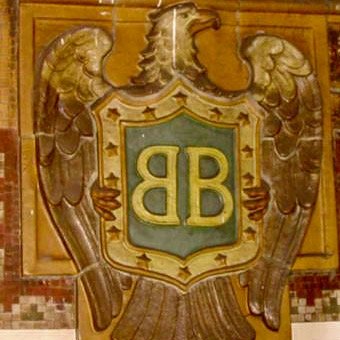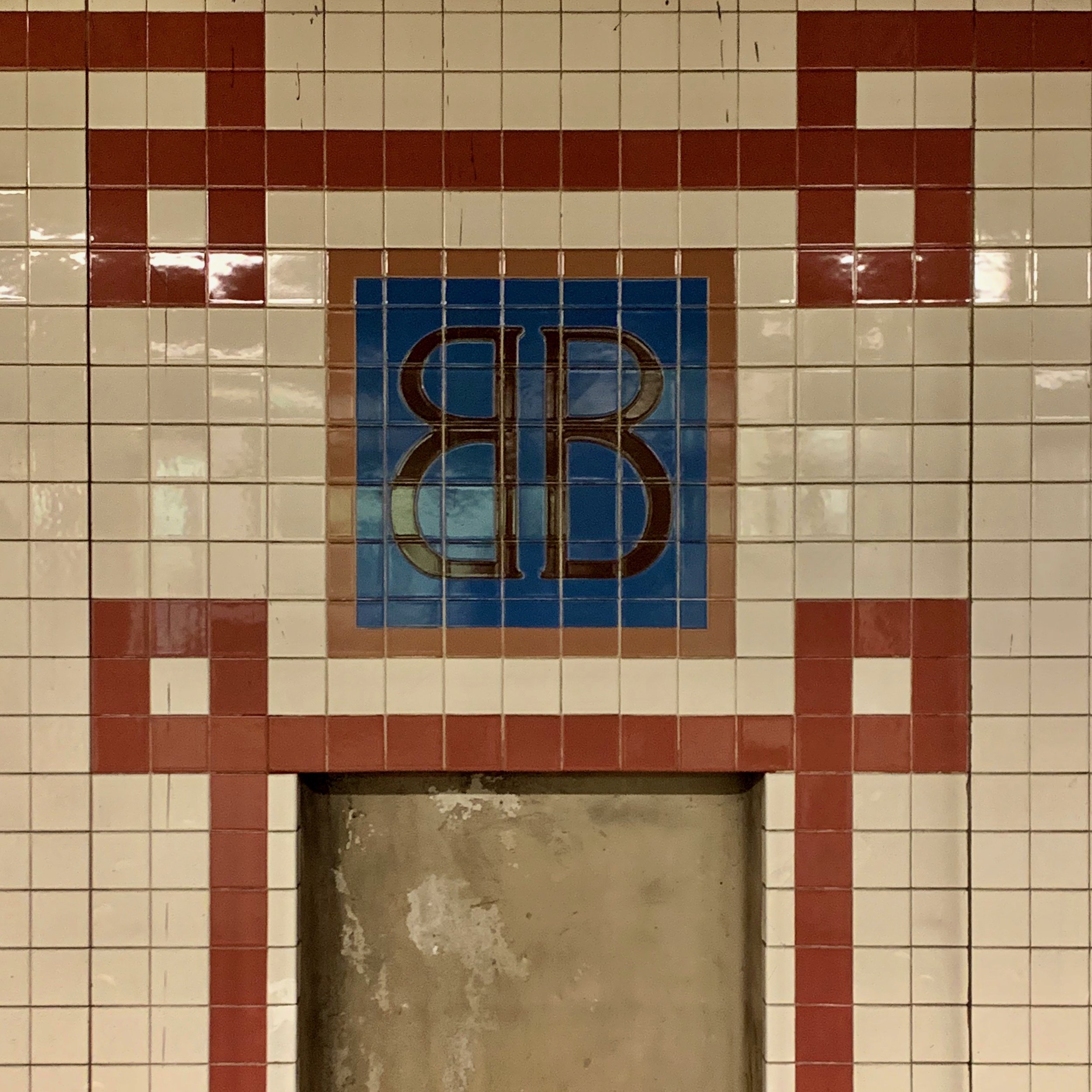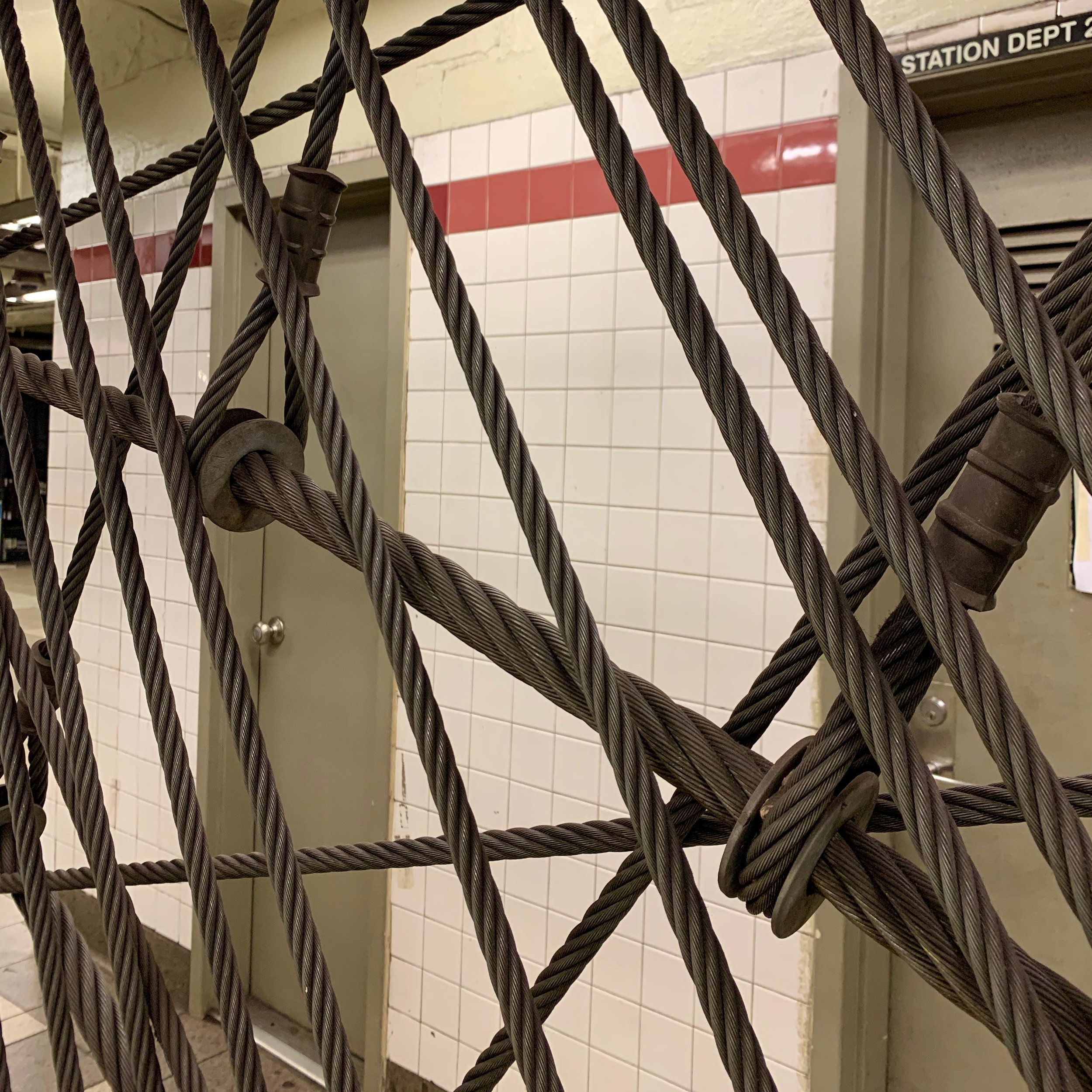The next stop on the New York subway in the Original 28 stations is Brooklyn Bridge/City Hall. Blink and you’ve likely missed the old City Hall station, although the 6 train does slow down as it passes through.
One of the ORIGINAL 28, the Brooklyn Bridge Station lives on through renovation
Closed in 1945 after just over 40 years, City Hall had Gustavino vaulted ceilings and skylights, but it was one of the least-used in the system. The nearby Brooklyn Bridge stop was frequented by the express train and closer to connecting streetcars. Boston-based Grueby Faience Company received the commission to create elaborate plaques of faience, a double-fired terracotta with a jewel-like, lustrous glaze. Grueby would decorate a host of stations, but Brooklyn Bridge would be special. Much like the Union Square and 33rd Street stations, Brooklyn Bridge would boast bald eagles high on its walls, clutching plaques in their talons. But unlike any other station, these eagles displayed the initials “BB,” the first “B” reversed to create a monogram.
Today’s subway is a sprawling labyrinth of 472 stations along 665 miles of track. But back in 1904, it was just a single line starting at City Hall (the fabled station of Guastavino-tiled vaults abandoned since 1945) and finishing at 145th Street uptown. London, Budapest, Paris, Berlin, Boston — all had opened subways years before. To be of any consequence, then, New York’s system would need to set a new standard.
Christopher Heins & Grany LaFarge, the subway’s chief architects, dressed the stations of the Brooklyn Bridge in neoclassical finery —roman brick wainscoting, marble coping, cornices and mosaic name panels. But the flashiest jewelry the stations would wear took the form of oversized plaques of glazed terracotta. Roman brick wainscoting, marble coping, cornices and mosaic name panels for the Brooklyn Bridge station.
Perched on the walls of a pair of abandoned subway platforms at the Brooklyn Bridge station on the 4, 5 and 6, these rare birds have been sealed off from public view—entombed, literally, behind brick walls—for six decades. Until just after the recent renovation.
Thanks to the foresight of William Barclay Parsons, the chief engineer, the subway would be — above all — elegant. Having toured Europe’s subways, Parsons was dismayed to find them lacking in aesthetic appeal. “No attempt was made to give them a pleasing appearance,” he complained in 1894. And so, by the time the architectural firm of Heins & LaFarge got to work on the station interiors, the City Beautiful Movement was starting. Neoclassical décor was needed for the people who were going to use the subways. This way, they were exposed to something artistic.” Heins & LaFarge dressed the stations of the Interborough Rapid Transit Company in neoclassical finery—roman brick wainscoting, marble coping, cornices and mosaic name panels.
The results of a mid-90s renovation of the Brooklyn Bridge subway. Large tiles and name plates covered up most of the beauty of the original stop.
The Brooklyn Bridge's pioneering use of steel cables and a suspended roadway are repeatedly referenced in the design of artist Mark Gibian's work, who created the sculpture Cable Crossing (1996) for the MTA Arts & Design program. Within the west mezzanine a web of cables recalls the graceful forms of the bridge, while overhead a 30-square foot structure, suspended beneath a skylight, frames the cable work. At the turnstiles, three panels that also use cables serve as a functional barrier.
Cable Crossing (1996) by sculptor Mark Gibian uses some of the original suspension cable from the Brooklyn Bridge to evoke its presence in the station. The "lacy" curves of the panels "echo the beauty of the bridge's cross-hatched cables and the feeling of flight as it springs across the East River."
The energy of Cable Crossing suggests "the controlled power of the subway and its network of metal and concrete that undergirds the city. I wanted to explore movement, using soft curves with hard materials," Gibian said.







